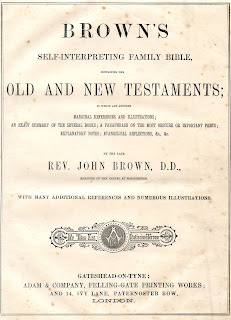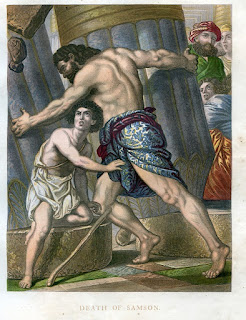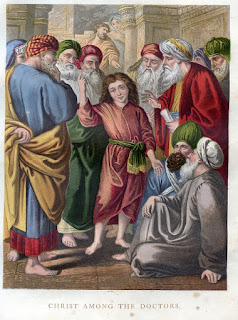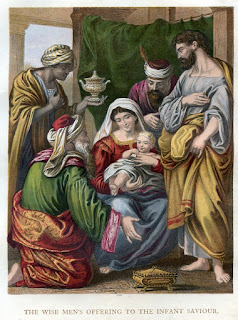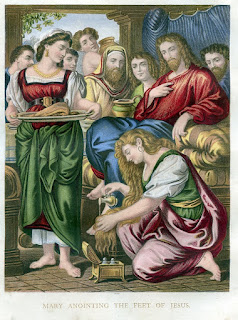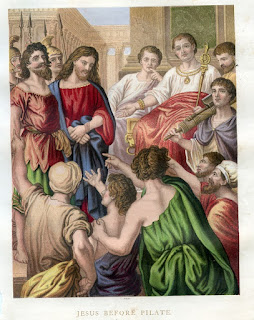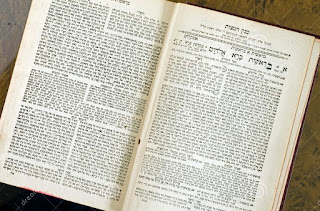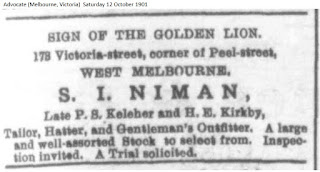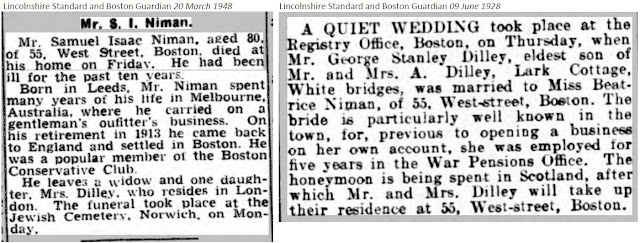New Month Old Post: first posted 2nd January, 2016.
Apologies that this is a little long and contains Scots words and religious references, but it is one of my favourite pieces. I was reminded of it by Haggerty’s comments on my last post.
“A canna mind fit tae dee,” (I can’t remember what to do) Iona had said,
puzzling over some detail of the voluntary work we were doing.
Attracted by her soft Banffshire accent, I dared suggest we might go see
a film together, and we became friends.
Iona was studying theology with a view to becoming a Church of Scotland
Minister. I tried to impress her by casually mentioning I had been
brought up in the Church of England but was instantly written off as
“just a jumped-down Catholic”. I had to creep off to the library to find
out what she meant (there being no Google in those days). It was a
reference to Catherine of Aragon, Anne Boleyn and Henry VIII’s secession
of the English Church from Rome in 1534. Jumped-down Catholic indeed!
If that seems dismissive, you should have heard what she had to say
about the Roman Catholic Church and its attitude towards women’s
ordination.
“Fit wye dae they insist ye hiv tae hae a penis tae be a Minister, and
then nae allow ye tae use it? Except for peeing that is, and they wadnae
een allow ye that if there wasna nae alternative.” She said this with a
kind of forceful but gentle determination that told you she was going
to be a brilliant Church of Scotland Minister.
One Sunday, Iona came with me on a visit home. She and my dad talked
non-stop about Scottish history, Aberdeen, and all kinds of other
things. My dad was a regular churchgoer, and as Iona had not been to
Church that day she decided to go along with him to the evening service.
I went too so as not to miss anything. So did my dad’s sister Dorothy
and her husband Fred. They wondered why I was going to Church with the
young lady I had brought home. They did not want to miss anything
either.
It was a long time since I had been to a regular service at the Parish
Church. In those days it was always well-attended. More recently, I had
seen decent congregations at weddings, Christenings and funerals. But
this evening when we arrived, we were the only five there. The vast
building looked gloomy and uncared for.
Dorothy and Fred took one pew, and my dad, Iona and myself sat
immediately behind. We waited for things to begin. I won’t say “waited
patiently” because Fred never waited patiently for anything. He rarely
sat still. He did everything at a frantic pace. Even so, I was still
surprised when he jumped up, disappeared through a side door and
re-emerged with a stepladder. Ignoring Dorothy’s exasperated protests,
he rushed into the most sacred, chancel part of the church, set up the
stepladder, moved the golden cross and candlestick holders out of the
way, and climbed up and stood on the altar. Dorothy sighed and turned to
Iona with her usual resigned apology: “My husband’s hyperactive.”
Fred then lifted his arms and reached up to the heavens. I thought for a
moment he must have been overcome by revelations of everlasting
splendour until he began to change the light bulbs hanging from above.
Only one bulb was out but he explained it was good maintenance practice
to replace them all at the same time. Not even God Himself would dare
disagree with a qualified electrical engineer and safety consultant.
I have to admit to being somewhat relieved to realise that the only
brilliance shining down from upon high that bothered him was the number
of lumens illuminating the proceedings. I had wondered for a moment
whether he might have been engaged in some newly-instigated aspect of
worship, in which we now all went up in turn to stand on the altar to
declare ourselves, only metaphorically I hoped, sacrificial lambs. I
felt sure that when it was my turn I would be bound to get it all wrong
and make a fool of myself in front of everyone. It is not easy to let go
of your inhibitions in public.
Fred had just put the stepladder away when two further members of the
congregation joined us. The first, a serious, shiny-faced man with a
brylcreemed comb-over, checked jacket and non-matching striped tie, bid a
curt “Good Evening”, went into the pew behind us, knelt down, closed
his eyes tightly and began to pray. Then came an old lady dressed up in
black hat, gloves and overcoat, with silver brooch and hat pin. She
shuffled slowly up the aisle on a walking stick. Dorothy addressed her
as Mrs. Fisher and pointed to the seat beside her. She sat down and
observed loudly what a wonderfully large turn out we had this evening.
Evidently some weeks it was just my dad and Mrs. Fisher.
The Minister entered through the transept from the front and began to
light the candles. Fred put his hand to the side of his mouth and turned
to Iona conspiratorially.
“This bloke’s a complete idiot,” he whispered none too quietly, disturbing the shiny-faced man from his communion with God.
The Minister, the Reverend Mundy, was a Church Army Evangelist who
helped in the Parish by taking the Sunday evening service once a month.
He was short, bald and round, but held himself stiffly upright in his
surplice, like a little white budgerigar, in an effort to look more
imposing than he actually did. Perhaps he imagined he was leading the
grand and moving ceremony of Choral Evensong, but this was not Choral
Evensong, it was Evening Prayer. There was no choir. In fact, there was
no organist either: only the Minister and the seven members of the
Congregation. We had to sing the hymns and psalms unaccompanied.
It was a total shambles. Our feeble voices evaporated self-consciously
into the roof beams. As we mumbled our way through ‘The day Thou gavest,
Lord, is ended’ all in different keys, Mrs. Fisher rustled
ineffectually through her hymn book trying to find the right page. She
might have managed better if she had taken off her gloves. By the time
Dorothy had helped her find the page, the hymn Thou gavest, Lord, had
ended, and the rustling began all over again as Mrs. Fisher tried to
find the Order of Service in her prayer book.
The next hymn was even worse. It was one of those excessively cheerful,
suspiciously Methodist hymns, known only to the Reverend and the
shiny-faced man. They sang to completely different tunes, each trying to
drown out the other as if to ensure God heard them first. Shiny-face
was easily the loudest, but in any formal competition I would have
called for him to be disqualified on the ground that his checked jacket
and striped tie gave unfair advantage.
The psalms, prayers, responses, confession, absolution, creed, canticles
and other spoken words of Evening Prayer are set out in the Book of
Common Prayer. They go on forever, and the longer they go on, the more
you could be forgiven for allowing your mind to wander. Fred’s mind
clearly started to wander early on, but was snapped back into focus by
the short prayer: “Lighten our darkness, we beseech thee, O Lord;” prompting
him to examine the ceiling for further areas of darkness in need of
lightening. He even stood up to survey the rear of the church, but the
Reverend Mundy droned on without noticing.
I should have anticipated what happened next and prevented it. I failed
to spot that my dad had been dying to tell Mundy that Iona was going to
be a Church of Scotland Minister. The opportunity came as Mundy waited
to shake our hands after the service. It was never going to work out
well.
Mundy brightened up like one of Fred’s new bulbs and began to emit a
long, one-sided homily about recognising one’s calling, changes to the
liturgy and who should be the new Archbishop of Canterbury. Meanwhile,
Fred re-appeared with a heavy wooden extendable ladder and began
changing light bulbs high up the walls. Despite being a safety
consultant, he did not look very safe to me. He rushed from bulb to bulb
swinging the ends of his ladder so lethally he nearly knocked over the
still-burning candles and set fire to the altar cloth.
And then, you knew it was coming, the topic Mundy had been wanting to
talk about all along. Ingenuousness finally got the better of discretion
and he homed in on the incendiary subject of women’s ordination. Iona
listened solemnly as he declared it would be a mistake to admit women
into the clergy, not, he forcibly emphasised, that he was personally against
the idea, but because there would be a schism of two thousand Ministers
leaving the Church, and he would not want that to happen. In any case,
he continued, he thought a lot of women who wanted to be priests had
been born with the wrong anatomy. He thought women should look like
women.
Just when it seemed inevitable that Mundy would be obliterated by the
“so ye hiv tae hae a penis” put down, the end of Uncle Fred’s ladder
whizzed past, missing the side of his head by inches. It was like a
portent of Divine Providence. Had he not just told us in one of the
readings “... every tree which bringeth not forth good fruit is hewn
down, and cast into the fire”?
“He’s jist a bletherin’ fool,” Iona said afterwards echoing Uncle Fred. “He disna ken fit he’s spikkin’ aboot.”
In an odd sort of way, Iona’s speech reminded me of my grandparents’ Yorkshire dialect. You wondered about their common Anglo-Saxon roots. Even some of the words were the same. They talked about “bairns” and “be-asts” and t’ “watter”, and were amused when my brother had birthday cards “fra lasses”. They were words you wanted to use yourself because they felt like they meant; not clinical, educated English words that “slid so smooth from your throat you knew they could never say anything that was worth the saying at all.” (Lewis Grassic Gibbon: Sunset Song, 1932). For more about Buchan Doric as it is usually called, its origins and how it sounds, and to attempt to spik lik a teuchtar, you can do little better than to look on Google books at (or buy): Doric: The Dialect of North-East Scotland by J. Derrick McClure (2002). I especially like Chapter 4: Examples of Recorded Speech.




